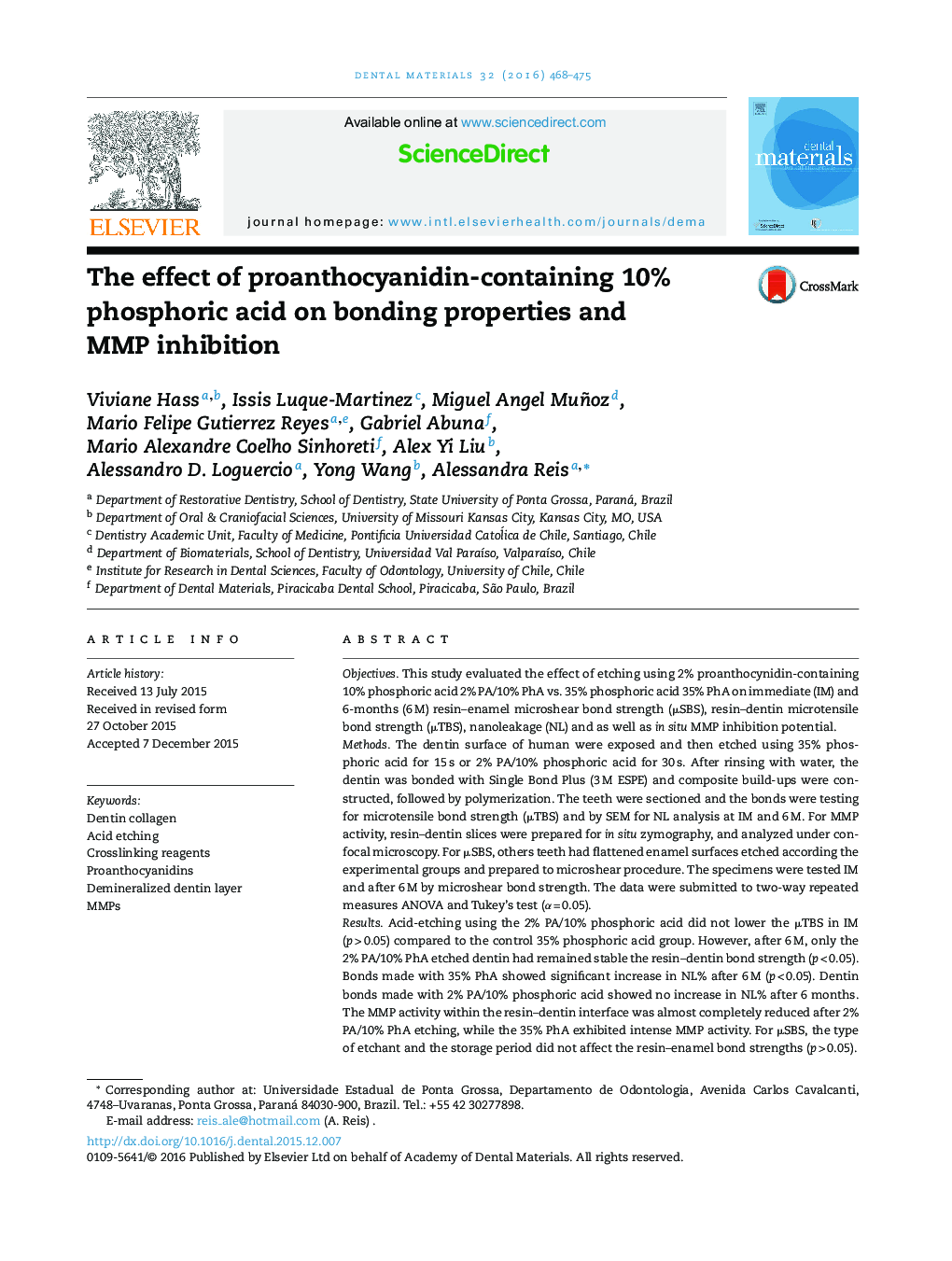| Article ID | Journal | Published Year | Pages | File Type |
|---|---|---|---|---|
| 1420525 | Dental Materials | 2016 | 8 Pages |
ObjectivesThis study evaluated the effect of etching using 2% proanthocynidin-containing 10% phosphoric acid 2% PA/10% PhA vs. 35% phosphoric acid 35% PhA on immediate (IM) and 6-months (6 M) resin–enamel microshear bond strength (μSBS), resin–dentin microtensile bond strength (μTBS), nanoleakage (NL) and as well as in situ MMP inhibition potential.MethodsThe dentin surface of human were exposed and then etched using 35% phosphoric acid for 15 s or 2% PA/10% phosphoric acid for 30 s. After rinsing with water, the dentin was bonded with Single Bond Plus (3 M ESPE) and composite build-ups were constructed, followed by polymerization. The teeth were sectioned and the bonds were testing for microtensile bond strength (μTBS) and by SEM for NL analysis at IM and 6 M. For MMP activity, resin–dentin slices were prepared for in situ zymography, and analyzed under confocal microscopy. For μSBS, others teeth had flattened enamel surfaces etched according the experimental groups and prepared to microshear procedure. The specimens were tested IM and after 6 M by microshear bond strength. The data were submitted to two-way repeated measures ANOVA and Tukey's test (α = 0.05).ResultsAcid-etching using the 2% PA/10% phosphoric acid did not lower the μTBS in IM (p > 0.05) compared to the control 35% phosphoric acid group. However, after 6 M, only the 2% PA/10% PhA etched dentin had remained stable the resin–dentin bond strength (p < 0.05). Bonds made with 35% PhA showed significant increase in NL% after 6 M (p < 0.05). Dentin bonds made with 2% PA/10% phosphoric acid showed no increase in NL% after 6 months. The MMP activity within the resin–dentin interface was almost completely reduced after 2% PA/10% PhA etching, while the 35% PhA exhibited intense MMP activity. For μSBS, the type of etchant and the storage period did not affect the resin–enamel bond strengths (p > 0.05).SignificanceTen percent phosphoric acid containing 2% PA can produce stable resin–dentin and enamel–resin interfaces, without requiring additional steps in the bonding procedure. Future studies for longer evaluation time are required.
